Radish
Radish is an edible root vegetable. It belongs to the Raphanus genus and Brassicaceae family. It is grown throughout the world. There are many varieties of this vegetable, differing in shape, size and color. Read all the details about this amazing root vegetable in the article below.
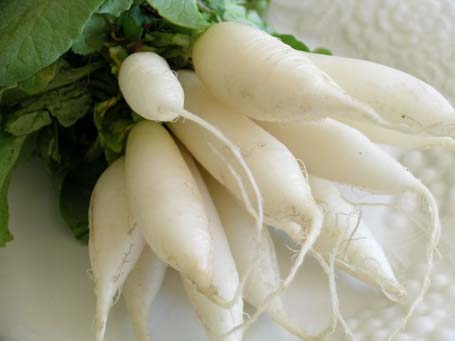
Radish
Table Of Content
Scientific Name
Scientific name of radish is Raphanus sativus.
Description
Find the physical description and taste of radish.
Color: Skin of this vegetable varies in color in its different variety. The flesh inside is always fresh white.
Texture: This root vegetable has a watery, crunchy and slightly fibrous texture.
Smell: It has no smell of its own.
Taste: Taste of this vegetable can be compared to that of Jicama but devoid of the sweetness. It tastes slightly bitter.
Leaves: The leaves of this root’s plant are partially divided into sections. These leaves are rough in texture and the outer ones are broader and bigger than the rest of the inner leaves.
Flowers: The beautiful flowers bloom in different colors such as pale purple, white, etc. The raceme has approximately 30 flowers. The pedicels are covered with bristles. Each of the bristles is about 1 to 2 cm long. The sepals measure between 6.5 and 10 mm.
Seeds: The seeds are edible and spicy in flavor. Some of these plant varieties are specially grown for these seeds only. They are crunchy and hot.
History & Origin
The first word of the scientific name of radish literally means “fast appearing” in Greek language. The name had been given referring to the speedy germination of the plants of this root. The common name of this vegetable has originated from the Latin word “radix” which means “root”.
This root vegetable hails its origin from China. It is evident from ancient Egyptian records that radish had been a very popular edible vegetable in there. The high value of this vegetable in Greece has been proven by the fact that gold imitations of radish were also made from valuable metals like gold.
Companion Plant
Plants of the radish roots serve very effective companion plants. These plants are brilliant trap crops against pests, protecting the surrounding crops from pests.
Varieties
These root vegetables can be segregated into four main categories depending on their seasonal growth.
Spring Radish
These radishes are planted in cooler climatic conditions and cultivated in the spring season.
Summer Radish
This variety grows faster than the rest and is cultivated within 3 to 4 weeks of planting.
Winter Radish
This variety is cultivated in winter. These radishes are commonly referred to black radish.
Daikon Radish
This name is referred to a huge variety of Asian radishes that grow in winter. It is also called Chinese, Japanese and Oriental radish. These radishes have long and white roots.
The Sakurajima Daikon variety tastes pungent and hot. It usually grows up till around 10 kg. It can grow till 30 kg if not cultivated and left undisturbed under the ground.
Nutritional Facts & Values
Given below is the nutritional information in every 100 g of raw radish.
| Nutrient | Amount |
| Energy | 66 kJ |
| Fat | 0.10 |
| – Dietary fibe r | 1.6 g |
| – Sugars | 1.86 g |
| Protein | 0.68 g |
| Riboflavin (vit. B2) | 0.039 mg |
| Thiamine (vit. B1) | 0.012 mg |
| Pantothenic acid (B5) | 0.165 mg |
| Niacin (vit. B3) | 0.254 mg |
| Folate (vit. B9) | 25 μg |
| Vitamin B6 | 0.071 mg |
| Vitamin C | 14.8 mg |
| Iron | 0.34 mg |
| Calcium | 25 mg |
| Phosphorus | 20 mg |
| Magnesium | 10 mg |
| Zinc | 0.28 mg |
| Potassium | 233 mg |
| Carbohydrates | 3.40 g |
Health Benefits
Though the taste of radish is not much prominent or delectable but the health benefits of eating this root vegetable are highly valuable.
- This vegetable detoxifies and purifies blood.
- It is good for liver and stomach.
- The root vegetable supplies more amount of fresh oxygen in the blood and restrains damage of red blood corpuscles in jaundice.
- It removes haematoidin from the blood and checks from its further production.
- It gives relief from piles and heals it very fast.
- Radish juice soothes digestive system.
- Radish is diuretic.
- Radish juice soothes burning sensation while urinating.
- Consuming this root vegetable fills up the stomach and keeps from hunger pangs for longer hours without harmful fats. Thus it helps in weight loss and maintenance.
- It has been proven that consumption of this vegetable helps in curing intestines, kidneys, colon, oral and stomach cancer.
- Radish seeds, soaked in vinegar in powdered form and consumed, applied on Leucoderma patches on skin decreases the patches.
- Eating radish helps in the process of treating Leucoderma.
- It also cures cracked and dried skin when applied externally.
- It purifies the kidneys.
- Consumption of this root vegetable also protects the kidneys from being infected.
- Radish contains anti-pruritic agents. This helps in curing insect bites, bee stings, wasps, hornets etc.
- Drinking radish juice with a bit of black salt cures internal infections, curing fever from the very roots.
- This vegetable is anti-congestive and thus gives relief from respiratory congestions.
- It cleans lungs and breathing wind pipe.
- This root vegetable treats cold.
- It cures general allergies.
- Radish is beneficial for liver also.
- It regulates the flow and production of acids, enzymes, bilirubin and bile.
- The vegetable protects gallbladder also and keeps it soothed.
- It is a good appetizer.
- Consumption of radish improves blood circulation.
- It helps reduce chronic headache problem.
- It regularizes the metabolism.
- The vegetable can be taken regularly to treat nausea.
- It treats whooping cough.
- It cures acidity problems.
- Radish protects and repairs DNA.
- Consumption of radish increases immunity in body.
- It decelerates the process of inner body aging by repairing cells and preventing further destruction as well as supplying fresh oxygen in blood.
During Pregnancy
Though radish is an extremely nutritious vegetable but still the amount of its consumption needs to be restricted during pregnancy. Specially, avoid eating this vegetable raw during pregnancy as that can contaminate bacteria.
Edibility
Though the root is the main vegetable considered of the radish plant but the flowers, leaves and young pods are also edible. The leaves are widely eaten in many mixed vegetable and salads. Radish is eaten raw as well as cooked.
Recipes
Radish is eaten in many forms around the world. They are eaten raw, cooked, pickled and in India this vegetable comes in special recipes.
- Raw radishes are eaten around the world in salads.
- In India this vegetable is mashed and cooked spicy to stuff inside flat round breads.
- It is pickled in many eastern Asian cultures.
- Radish juice with a little black salt and pepper sprinkled on it makes a fine appetizer.
Allergies & Side Effects
This root vegetable is very nutritious and relatively safe to consume by most people. Be further safe by avoiding eating or consuming radish in any form under the following circumstances.
- In the lactation period over consuming it should be avoided.
- Strictly devoid radish from your diet if suffering with gallstones.
- Over eating this root vegetable can disturb the digestive tract even under normal circumstances also.
Uses
Being an edible root vegetable and extremely nutritious thus being beneficial for health, radish is obviously eaten around the world. But this vegetable has many other uses apart from its edibility.
Edible Uses
- The root is the primary vegetable is the most common and nutritious edible part of the whole plant.
- Leaves of this plant are also eaten as leafy vegetable.
- Bulb of radish is mostly eaten raw in salad.
- Young leaves are also eaten as sprouts.
- It is a common ingredient in most European dishes.
Industrial Uses
- Radish seeds are pressed and oil is extracted from them for commercial use. This oil is used as biofuel.
- Radish juice is used in cough and cold medicine production.
Other Uses
- Mashed radish can be used as a good face pack.
- Moisture of this vegetable works as a great cleanser and toner.
Interesting Facts
Here are some fun and interesting facts about radish.
- The name of this root vegetable “radish” holds the meaning of its true form. It is derived from the Latin word “radix” which means “root”.
- This vegetable was first cultivated and consumed as edible in China.
- Radish was so highly esteemed in Greece that its gold replicas were made in old times.
- These plants belong to the family of mustard crops.
- Most of the states of USA grow radish.
- These plants grow very fast and almost without much care.
- These are consumed as foods and medicines in raw as well as its extracts.
- This looks pretty much similar to beets and carrots.
- In Mexico and Oaxaca, people celebrate a radish festival named Noche de los Rábanos on 23rd December. It has become an important part of Christmas carnival. Local people engrave sculpture of different famous people or religious figures on radish and display them in open.
Pictures
See the pictures below and find out how the different varieties of radish look.
Reference:
https://pharmeasy.in/blog/ayurveda-uses-benefits-side-effects-of-radish/
https://www.webmd.com/diet/health-benefits-radish#1
http://www.thefresh1.com/radishes.asp#fun
http://www.livestrong.com/article/503658-can-pregnant-women-eat-radishes/
http://urbanext.illinois.edu/firstgarden/planning/dictionary/veggies/radish.cfm
http://www.healthaliciousness.com/vegetables/radish.php
https://www.botanical.com/botanical/mgmh/r/radish01.html
http://en.wikipedia.org/wiki/Radish#Varieties
http://www.organicfacts.net/health-benefits/vegetable/health-benefits-of-radish.html
- by anwiksha
- July 13th 2012

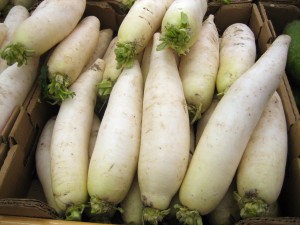
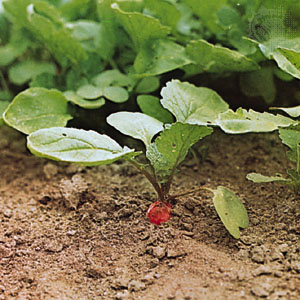
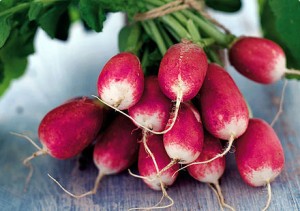
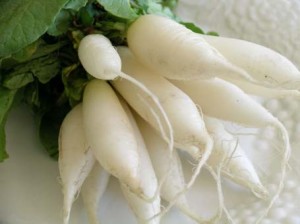
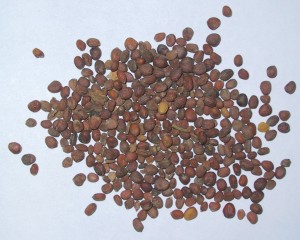
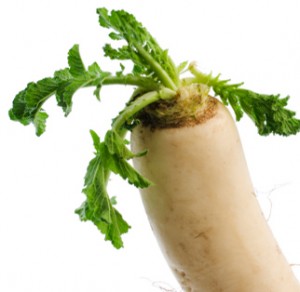
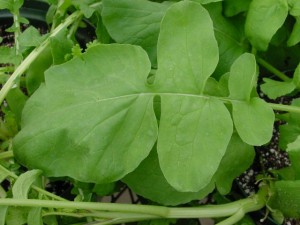
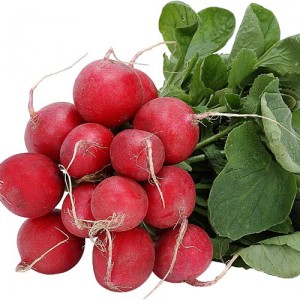
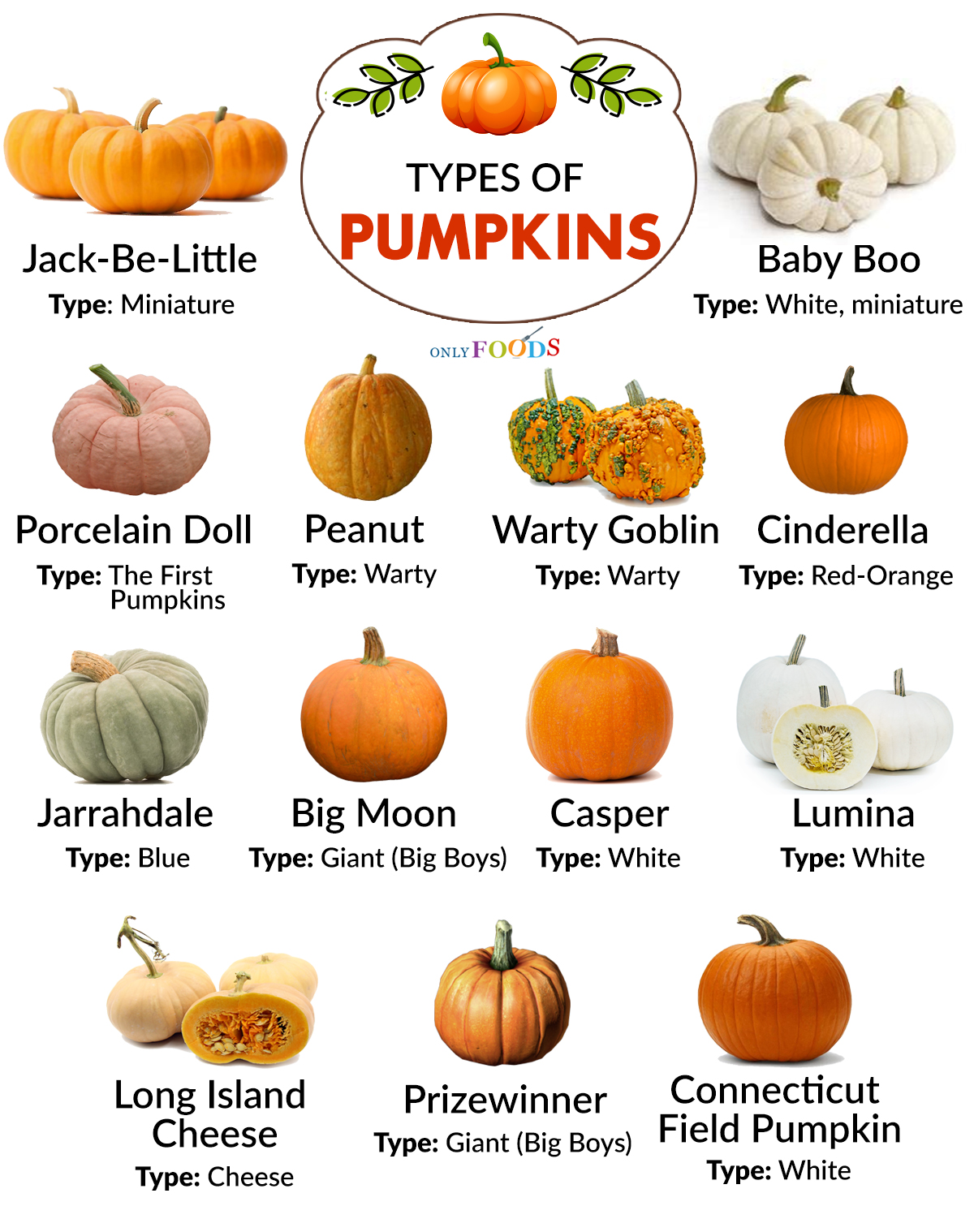
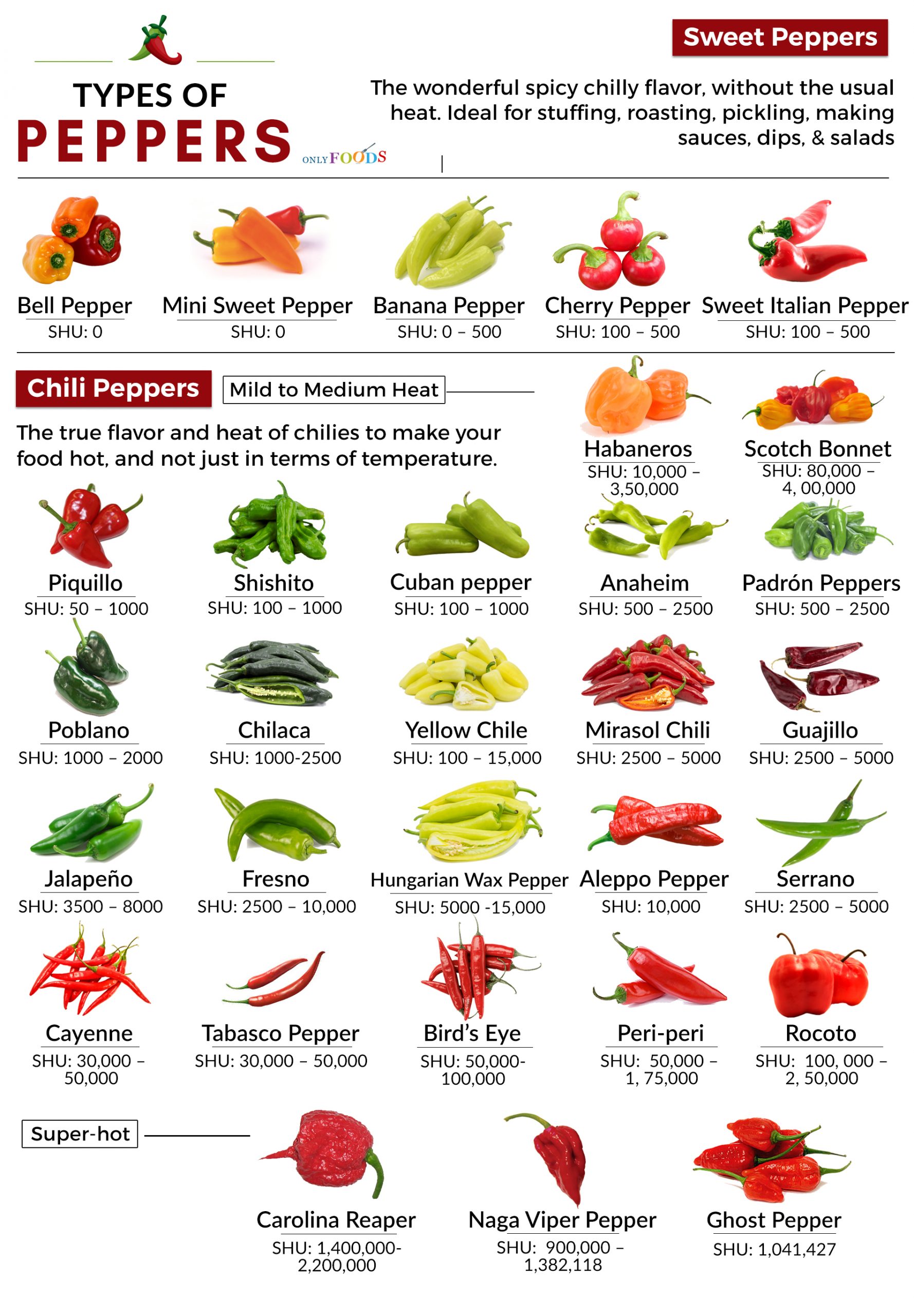
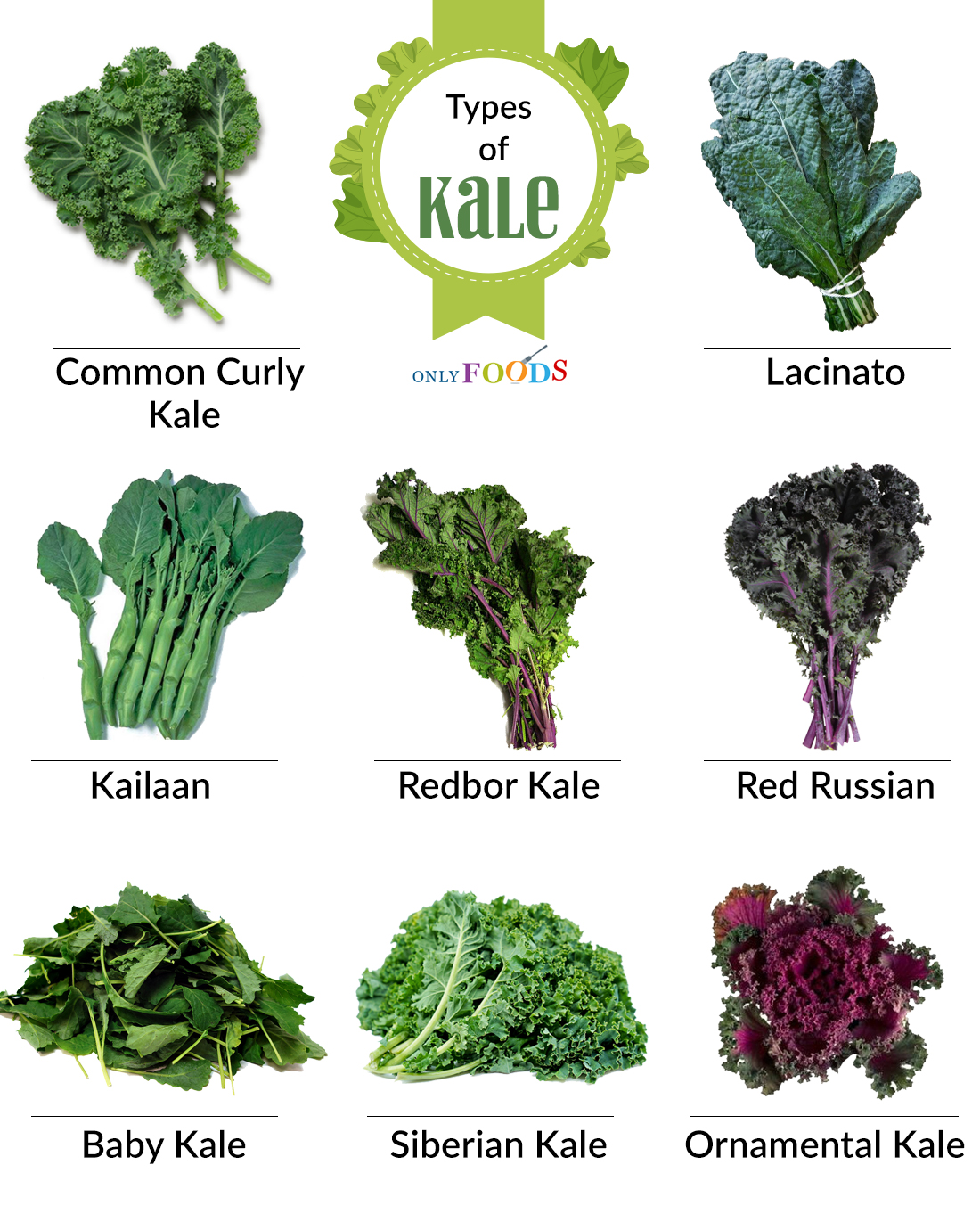
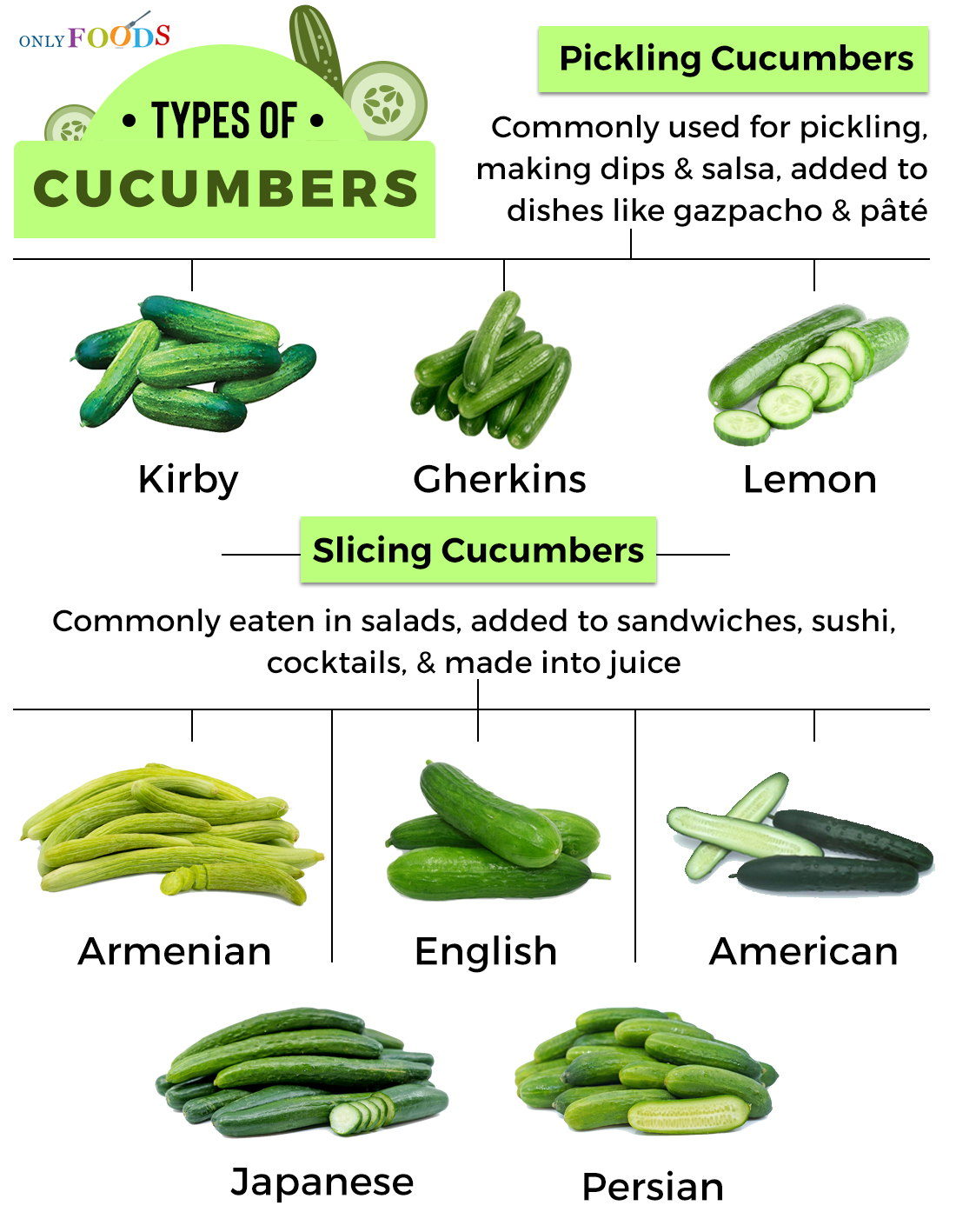















Leave a Reply